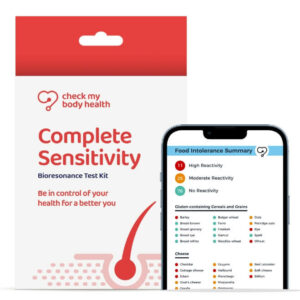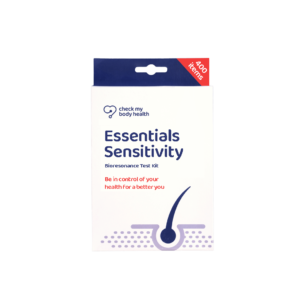
Medically reviewed by Sian Baker, Dip ION mBANT mCNHC
on April 01, 2023. To give you technically accurate, evidence-based information, content published on the Check My Body Health blog is reviewed by credentialed professionals with expertise in medical and bioscience fields.
If you experience discomfort or cold-like symptoms when you eat celery, it may be a sign that you have an allergy or intolerance. These symptoms can range from mild to severe and can sometimes worsen over time.
In this post, we’ll explain the symptoms of celery intolerances and allergies, how common they are and what you can do to figure out whether or not you have one.
What are the symptoms of celery allergy?
The symptoms of a celery allergy vary. Some can be reminiscent of a cold or flu, while others affect your stomach and digestive system or even cause breathing difficulties. If you have an allergy to celery, the symptoms include:
- Coughing, sneezing and runny nose
- Shortness of breath
- Nausea and vomiting
- Itchy or swollen eyes
- Stomach pain
- Lightheadedness
- A skin rash
- Swollen lips or throat
In some extreme cases, an allergy can result in anaphylaxis.
In most cases, if you have a celery allergy your symptoms will be worse if you eat raw celery rather than cooked celery.
What is food intolerance?
A food intolerance is caused by your body’s inability to process or metabolise a certain type of food, which leads to painful or unpleasant symptoms. This is unlike an allergy, which is your body mistaking the food as a threat which triggers a response from your immune system. Both an intolerance and an allergy can develop at any stage of your life.
How common is a celery allergy?
Celery allergies and intolerances are surprisingly common, however, because symptoms are far more noticeable after eating it raw, it’s only commonly diagnosed in regions where people eat high amounts of raw celery. This includes Switzerland and France, where between 30% and 40% of people with food allergies are caused by celery.
So, if you experience any of the above symptoms after eating raw celery, there’s every chance it’s because you have an allergy or intolerance.
What should you do if you think you have a celery allergy or intolerance?
If you think you might have a celery intolerance, sensitivity or allergy, you should stop eating celery or food that contains it – even if it’s cooked. This isn’t just because the symptoms can be uncomfortable, but they can worsen over time.
To find out if you have a sensitivity so you can manage your diet, a Complete Sensitivity Health Test is a fast and easy way to find out for sure.
How do you test for a intolerance?
There are several ways you can find out whether or not you have a celery allergy or intolerance, with varying degrees of accuracy:
- An elimination diet involves you removing food that contains celery from your diet to see whether your symptoms stop.
- You can start a food diary to monitor what you eat and when you experience symptoms to see if there are any patterns.
- You can speak to your doctor or healthcare provider and ask them for advice.
- A complete sensitivity test can help you to identify an intolerance, even if it’s not celery
What foods should you avoid if you have a celery allergy or intolerance?
If you have an allergy or intolerance to celery or suspect that you do, you’ll want to avoid eating any type of food that contains celery, including celeriac and celery seeds. However, other foods to be mindful of that regularly contain celery include:
- Soups
- Sauces
- Salads
- Stews
- Juices
You may also develop an allergy to carrots and spices, so this is also something to be mindful of if you have a celery allergy or intolerance.
Test to see if you have a celery sensitivity
If you experience any symptoms after eating celery, whether cooked or raw, you may have an intolerance. To quickly and accurately find out for sure, taking a complete health sensitivity test can give you the answer in less than one week.




